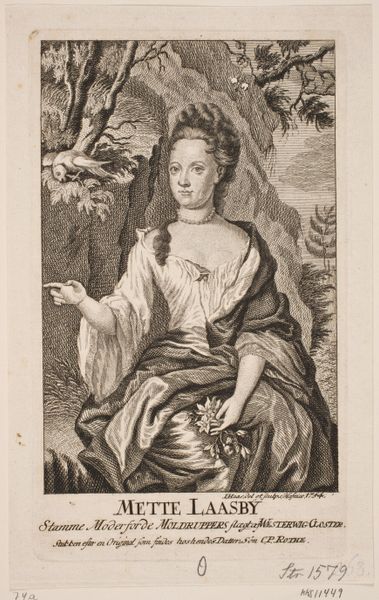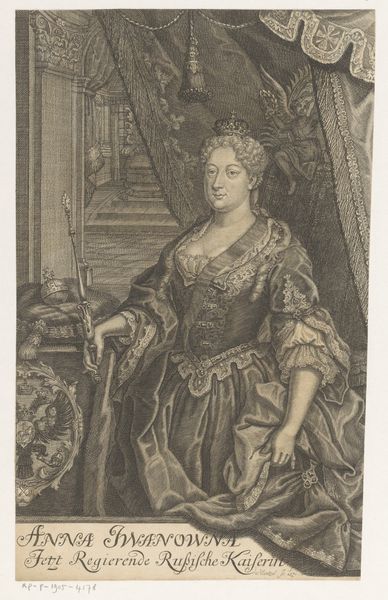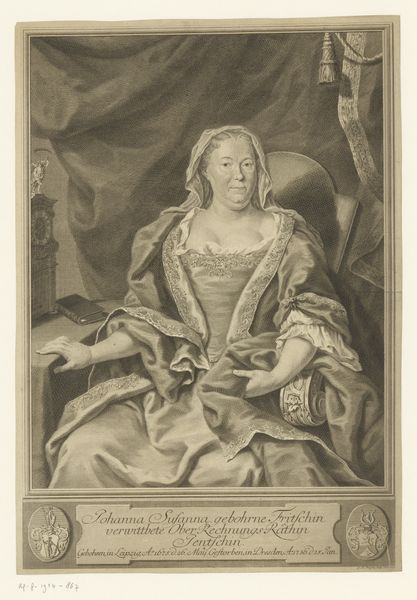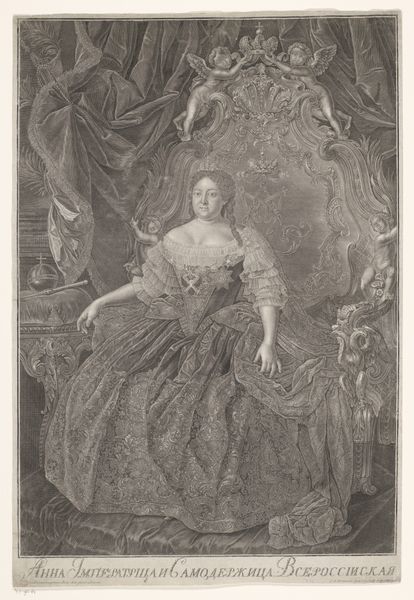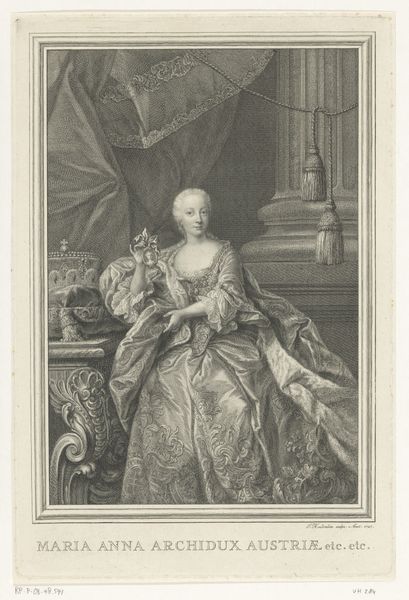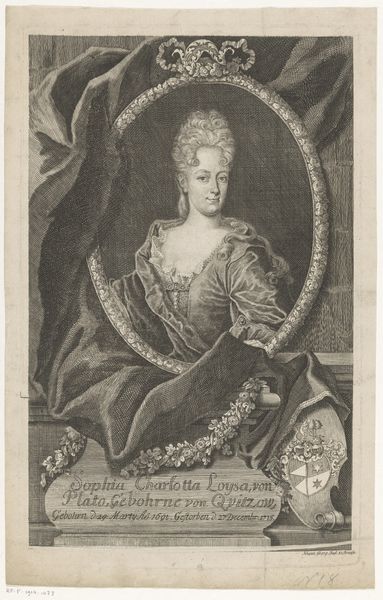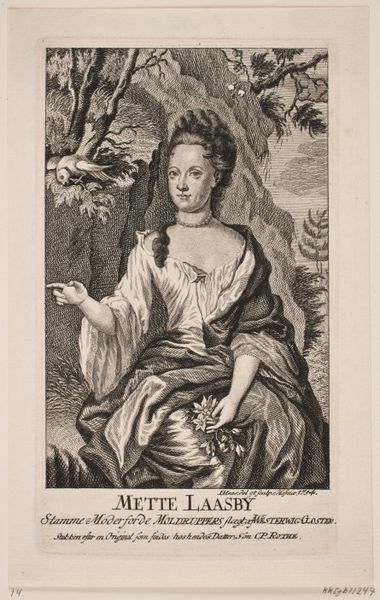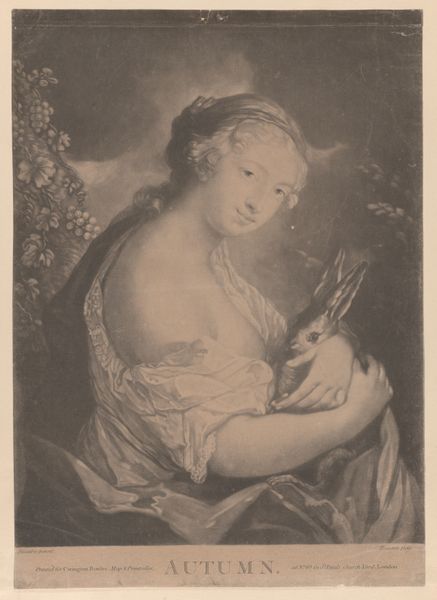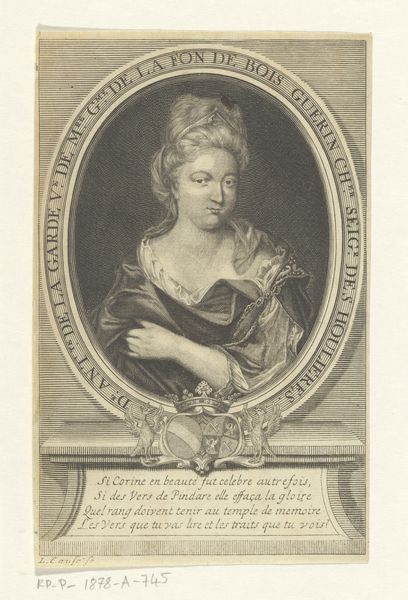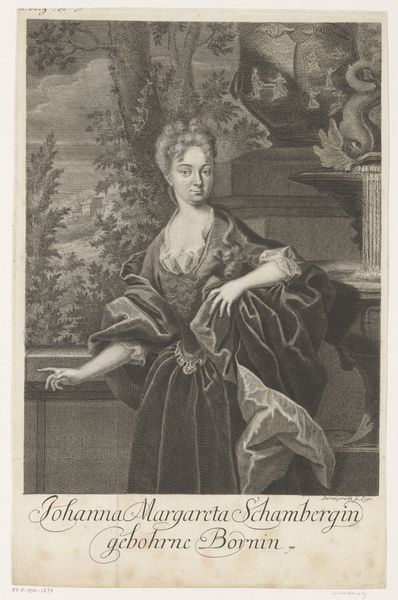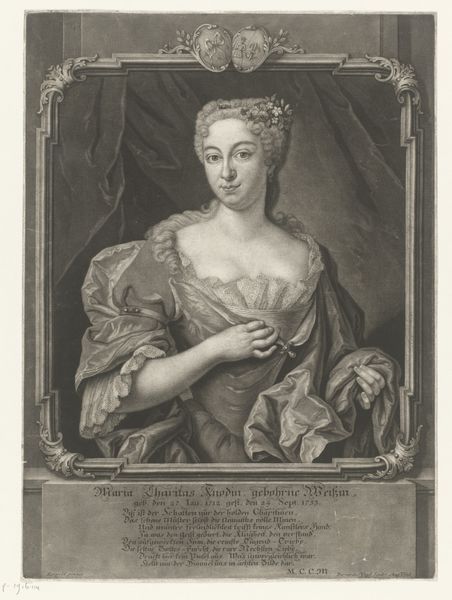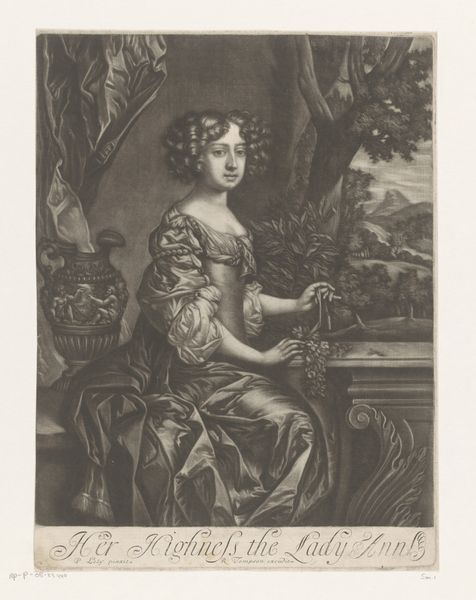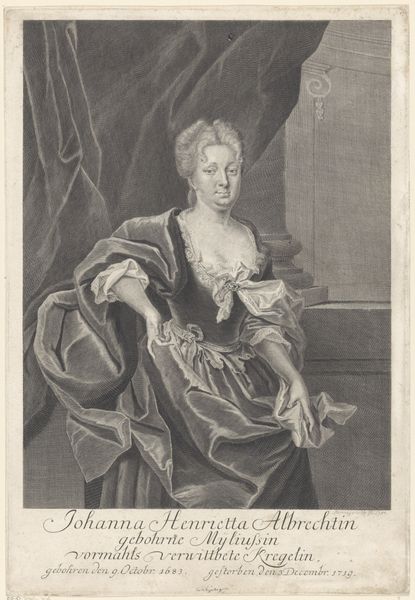
print, engraving
#
portrait
#
baroque
# print
#
old engraving style
#
genre-painting
#
history-painting
#
engraving
Dimensions: height 390 mm, width 265 mm
Copyright: Rijks Museum: Open Domain
Editor: Here we have a print titled "Portret van Maria Elisabeth" made sometime between 1728 and 1749 by Johann Ernst Gericke. It’s quite detailed for an engraving. What jumps out at me is the somewhat severe expression of the woman, contrasted with the almost theatrical staging around her. How do you interpret this work, considering its historical context? Curator: I see a fascinating negotiation of power and representation. We must look beyond the immediate impression of a portrait. Considering Gericke's era, how does this piece participate in constructing or reinforcing societal norms around female identity and status? Maria Elisabeth is presented within a very particular framework, a baroque staging laden with symbolism. The fruit, the classical sculpture in the background - these are not arbitrary details. They signify wealth, education, perhaps even a commentary on mortality, considering she is referred to as widowed. How do these elements speak to the experience and societal role afforded to women, particularly wealthy widows, in 18th-century Europe? Editor: I hadn't considered the symbols so deeply, more that they were stylistic choices. Are you saying the artist consciously used these to convey a message about women's position in society? Curator: It's a dance, isn’t it? The artist, the patron, the social climate, all contribute. While we can't definitively know Gericke's explicit intentions, we can analyze the visual language and situate it within the prevalent ideologies of the time. How does Maria Elisabeth conform to or subvert our expectations of women in portraiture of this period? Are there hints of agency, resistance, or perhaps even vulnerability? By posing these questions, we can begin to unlock richer layers of meaning. Editor: So, even a seemingly straightforward portrait can be a complex statement about gender, power, and social standing? Curator: Precisely. And approaching art with these critical questions helps us understand not only the past but also how those power dynamics continue to shape our present. Editor: This has given me a totally different perspective on portraiture; it is never just a face. Curator: Indeed. Keep questioning.
Comments
No comments
Be the first to comment and join the conversation on the ultimate creative platform.
